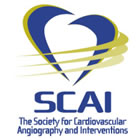| << To Blog Home >> | |
|
|
July 21, 2010 -- 2:05pm PDT Transradial Aims At The SCAI Of course, in other parts of the world, such as Japan and India, there have been large scale live demonstration symposia for years, chaired, for example, by Dr. Shigeru Saito or Dr. Tejas Patel or others. In fact, many members of the core group of U.S. cardiologists practicing this approach got their initial training in these courses. Moreover, in other parts of the world, the transradial approach to PCI procedures is performed 40-50% of the time. Some cardiologists use the wrist access point 90% or more of the time. Transradial access has been in the news here lately, usually characterized as a "new kind of angioplasty" -- but it's not new, just new to the U.S. So having one of the major national professional heart societies like SCAI (and the one most targeted to interventional cardiology) sponsor a course just on the radial approach is a big deal. And why transradial? As you can read in the Transradial Center on Angioplasty.Org, it's safer with less complications, more comfortable for the patients, and a feature that will probably be the one to drive its acceptance most: it's more cost-effective. |
|


 The
Society for Cardiovascular Angiography and Interventions (a.k.a. SCAI)
has just stepped up to the plate -- the training plate, that is, and
it's just a few blocks from Fenway Park in Boston. On Friday, November
5, 2010, at
the
Sheraton
Boston Hotel, SCAI will present what I believe is the
The
Society for Cardiovascular Angiography and Interventions (a.k.a. SCAI)
has just stepped up to the plate -- the training plate, that is, and
it's just a few blocks from Fenway Park in Boston. On Friday, November
5, 2010, at
the
Sheraton
Boston Hotel, SCAI will present what I believe is the